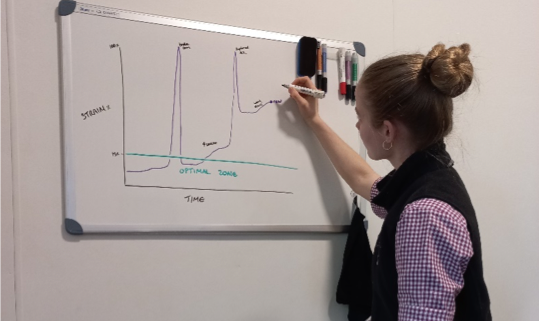How Barefoot Physio Can Treat Your Accumulative Strain
Why do we experience pain without any obvious cause of injury? This is a common question we get asked at Barefoot and the answer is most commonly, due to accumulative strain.
Let’s firstly summarise the main reasons we may feel pain:
- Due to traumatic injury – we have a broken bone, torn ligament, or other tissue damage
- Due to a disease process – such as an illness/infection, genetic condition
- Due to build-up of accumulative strain – minor forces repetitively acting on the body over time
Now the first two reasons make a lot of sense, but sometimes the concept of accumulative strain can be a little harder to understand. Let’s walk through this together.
So, what is accumulative strain?
As we just mentioned, accumulative strain is the build-up of minor forces on the body (muscles, ligaments, joints, nerves) over time. This may result from a lack of good control, or from sustained strain over time. What do we mean by this?
Imagine sustained strain as walking the exact same path every day. After one day, or even quite a few there seems to be nothing different. But what you may notice over time is that your footsteps have begun to wear a path into the grass. This is like the same muscles and joints doing the work all the time without any variation. This strain starts to show over time.
When accumulative strain builds up, sometimes an innocent activity that you have done countless times without any issues (like bending over to pat the dog) can be the “straw that breaks the camel’s back” so to speak. Your body is sending you the message that you need to change something the only way it knows how….with symptoms.
How do we treat accumulative strain?
Accumulative strain can manifest in many ways. It might be felt as any number of symptoms, including pain, tightness, headaches, frequent bouts of illness.
Repetitive strain may be related to:
- Postures
- Exercise or sports techniques
- Previous injuries/illnesses
- Lack of sleep
- Emotional load – e.g. stress, anxiety
How do we treat accumulative strain at Barefoot Physiotherapy?
Firstly, we like to map it out. An accumulative graph is very useful as it allows us to both understand your current level of strain, and the journey your body took to get here. In the graph below you can see this depicted. Ideally everyone should be functioning in the optimal zone. This is when muscles and joints feel relaxed and mobile, movement ranges are 85% + and other factors such as nutrition, sleep and stress are being addressed.

We also have a discussion around the various influences contributing to the strain on your body and brainstorm strategies we can implement in order to help reduce them (for more on this – see Brain Overload).
Strategies that can contribute to reducing strain may include:
- Exercise modifications: just like you don’t want to be the only one doing all the work when you are part of a team, neither do the muscles and structures in your body. We need to ensure their isn’t compensation and that all parts of your system are working to their best ability. We can assess and prescribe your exercises in your physiotherapy appointment, or visit you at the gym for a gym review.
- Workstation set-up: we tend to spend the majority of our time at work. Are there modifications we can make to help your body be more comfortable during this period?
What can you do to limit strain on your body?
Let’s talk about some other tips that you can use to reduce the repetitive strain on your body:
- Wear footwear appropriate for you and your activities
- Get enough sleep, it is important to let your body rest and recover from your day, and prepare itself for tomorrow
- Make sure you have a good work/life balance – engaging in some downtime or enjoyable activities helps to reduce stress levels
- Ensure you are strong enough for the activities you perform in your day – make sure that the right muscle systems are strong enough for your activities – for example: having good glute and core strength is important for running so that their isn’t over recruitment of the back and hip muscles.
- Appropriate postural set-up for life activities – including at work, at home, in the car, at your desk or for the gym
If you want to learn more about accumulative strain, or want a personalized assessment to help reduce strain in your body come in and see one of our friendly Barefoot physiotherapists – book here.








Leave a Reply
Want to join the discussion?Feel free to contribute!